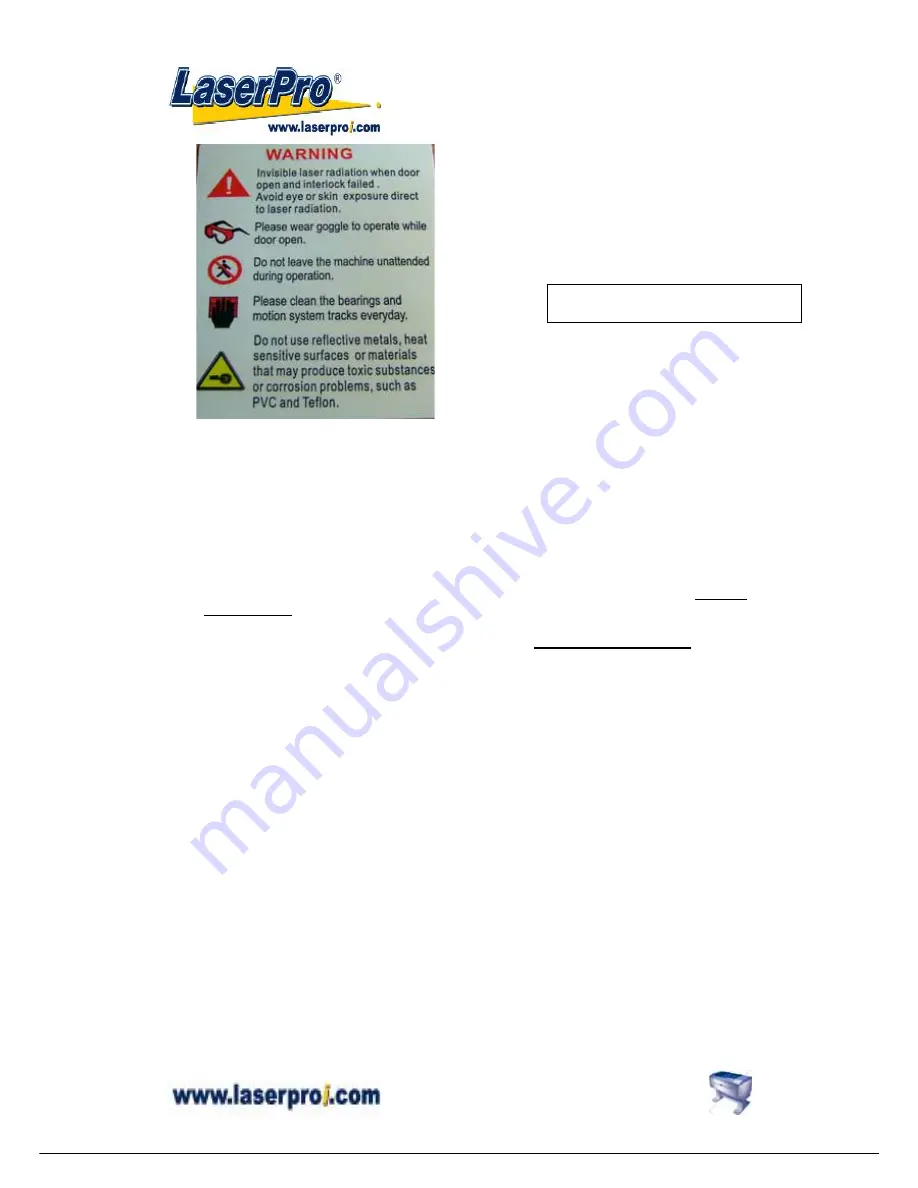
M
M
M
E
E
E
R
R
R
C
C
C
U
U
U
R
R
R
Y
Y
Y
U
U
U
S
S
S
E
E
E
R
R
R
M
M
M
A
A
A
N
N
N
U
U
U
A
A
A
L
L
L
7
Frequently Asked Questions
1. What materials can be processed by CO
2
laser?
Virtually any materials such as acrylic, wood, fabrics, glass, leather, marble, stone,
rubber stamps, paper products, coated metals, plastics (especially micro plastic
developed by IPI, Spectrum and Rowmark etc.) other hard-surface materials blended
with polyester and fibers ( Corian™, Fountainhead™, and Avonite™ etc.) or laserable
simulated products of stone, wood and metal etc.
Bare metals can not get a good engraving result by using CO
2
laser. However,
special
kind of spray
has been developed that allows CO
2
laser to mark on the bare metals
such as stainless steel, aluminum etc. Do not engrave or cut materials which are heat
sensitive or toxic substances can be produced
( e.g. PVC and Teflon coating )
.
2. What is the life cycle of the laser source?
The life cycle of laser source is around 20,000 hours, however it can be re-filled and
should be done by your dealer.
3. What is the main purpose of air assist system?
The air assist system can provide a much better engraving & cutting effect, as it will blow
away vaporized particles and prevent fire due to overheating.
4. What does cutting table do?
The cutting table, also known as honeycomb table, is especially useful for vector cutting
application. The space between materials and working table, gapped by cutting table,
allows heat and smoke to be disbursed and vented out which may otherwise cause bad
cutting effect.
5.
What is the maximum engraving speed of LaserPro
Mercury?
The maximum engraving speed of LasePro Mercury is 1066 mm/sec (42 inch/sec). When
engraving an A4 (18 x 28 cm) size square with 250dpi at full speed, it takes LaserPro
Mercury about 18 minutes to complete.
6. How to engrave an extremely long working piece?
The back door (or panel) of LaserPro Mercury can be removed by taking away the
On the upper left side of the machine









































